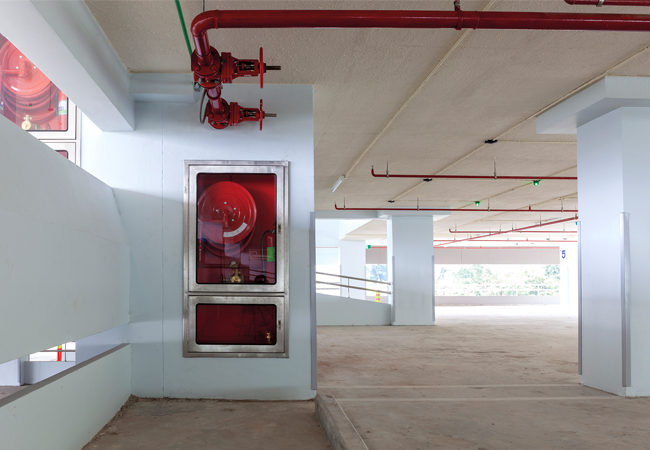
The new Part 2A of the Building Regulations should be compulsory urgent reading for all in the construction sector with any responsibility for procuring building work of any kind, or for designing or building it.
Part 2A introduces a whole series of new regulations, 17 in total, covering the duties, competence and behaviour of clients, designers and contractors. Part 2A also creates the new roles and duties of the principal designer and contractor for every project that were first called for over five years ago in Dame Judith Hackitt’s landmark review of Building Regulations and Fire Safety. And it comes into force in six weeks, on 1 October.
Clients must make ‘suitable arrangements for planning, managing and monitoring a project (including allocation of sufficient time and other resources) so as to ensure compliance with all relevant requirements.’
These arrangements must ensure that if the design is built it will be compliant with all relevant requirements and ensure that the work is actually carried out in accordance with those requirements.
The arrangements must also enable designers and contractors to co-operate with each other and to check regularly whether any of the work is classed as higher risk building work, as defined in section 91ZA of the Building Act 1984, which was inserted into that Act by section 32 of the Building Safety Act 2022.
The duty to make suitable arrangements is for the whole life of the project, not just the kick off meeting. There is also a duty on clients to ‘provide building information as soon as is practicable to every designer and contractor on the project.’
Again, this is for the life of the project, not just the first few weeks! Finally, clients have a legal duty to co-operate with any other person working on the project with duties under these regulations to enable them to fulfil those duties. There is a major emphasis on planning, monitoring and managing work.
While some organisations will already be well prepared, others may need to take rapid action as these new regulations come into force on 1 October 2023
Domestic clients are treated differently. Where there is only one contractor, they are responsible for making the arrangements set out above. Where there is more than one contractor then either the principal contractor or the principal designer, subject to their agreement with the client, are responsible for making those arrangements for the project. But they must be made.
Clients are not alone in having their role regulated. The regulations make new provisions for two new roles, principal designer and principal contractor. While these are the same titles as under CDM, as recommended by Dame Judith, they have quite specific new responsibilities.
The regulation on principal designer and contractor begins by setting out the appointments that the client needs to make. Where there is a single contractor then they are de-facto the Principal. Where there is more than one contractor, or reasonably foreseeable that there will be more than one contractor on a project, then the client must appoint a principal designer and contractor.
The designer must have “control over the design work as the principal designer” and the contractor must have “control over the building work as the principal contractor”. What is more, these appointments must be made in writing: they must be explicit, evidenced and auditable!
A client may instead certify, in writing, that the person(s) appointed as principal designer and contractor under CDM are also appointed under the Building Regulations. These appointments must be made before any application for approval for higher risk building work and before construction starts on any other form of project; they are for ALL building work, not just HRBs. For higher risk building work clients will need to keep written records of the steps they took to assure themselves that those appointed are competent to undertake the work involved.
New regulation (11E) sets out in some detail the considerations that must be addressed before appointing a designer or contractor. They apply to ALL building projects and all those appointed, requiring them to be competent. Chapter 3 of Part 2A of the amendment regulations addresses the competence requirements in some detail. There are four new regulations, 11F-I, for competence: a general regulation, one each for principal designer and contractor, and one giving requirements should either principal cease to meet the competence requirements.
Co-operation is now also a necessary behaviour, along with saying no to doing things beyond their skills, knowledge or experience.
Chapter 4 of Part 2A sets out the general duties of all dutyholders as well as additional legal duties of principal designers and contractors. These include sharing information and communicating effectively with other parties on the project.
And finally, tucked into Chapter 5 at the end of the Part is a regulation that defines as a ‘necessary behaviour’ of anyone claiming to be competent a willingness to refuse to carry out work which is not compliant with any relevant requirement, or to undertake design work that effectively cannot be built in compliance with regulations. Co-operation is now also a necessary behaviour, along with saying no to doing things beyond a person’s skills, knowledge or experience.
For anyone making appointments after 1 October all these requirements will apply. Part 2A of the Building (Amendments etc) (England) Regulations 2023 is mandatory reading for anyone responsible for making appointments or bidding for work under the new regime. They will take a bit of digesting in detail. But indigestion, or worse, ignorance, will not be a reasonable defence. Indeed, it might be clear evidence of guilt.
These are significant duties. While some organisations will already be well prepared, others may need to take rapid action as these new regulations come into force on 1 October 2023. For those who argue that this is all very short notice, these regulations have been coming for over five years and should not be a surprise. Besides, what is the problem of complying with a statutory duty to appoint only those who are competent to do design and construction work? Only those employing the incompetent have anything to worry about.
Bodies such as CIBSE will be working together with the Construction Leadership Council and Its constituent bodies to provide further industry guidance on these regulations and on how clients, principal designers and contractors and Accountable Persons can meet the new obligations in a safe, reasonable and proportionate manner. It is another step on the road to rebuilding trust in the construction and operation of our higher rise building stock, and another step on the road to building a safer future.
- CIBSE will be setting out the breadth of regulatory changes and new requirements of the building regulations at the one day conference: Building Safety: Meeting the Building regulations and delivering the Golden Thread on 28 September, London. For more information and to book visit CIBSE Golden Thread series.
ABOUT THE AUTHOR
Dr Hywel Davies is a former chair of the Building Regulations Advisory Committee who has worked in the field of regulations and standards for over 35 years. He is chief technical officer of the Chartered Institution of Building Services Engineers and an Honorary Fellow of CIBSE.
Links to new regulations
The new regulations deliver the recommendations of Dame Judith Hackitt in her report Building A Safer Future and cover the technical detail underpinning the new, more stringent regime for the design and construction of higher-risk buildings, wider changes to the Building Regulations for all buildings and the details of the new in-occupation safety regime for higher-risk buildings.
Amendments announced on August 17 2023:
The Building Regulations etc. (Amendment) (England) Regulations 2023
The Building Regulations (Higher-Risk Building Procedures) (England) 2023
The Building (Approved Inspectors etc. And Review of Decisions) (England) Regulations 2023
The Higher-Risk Buildings (Management of Safety Risks etc) (England) Regulations 2023
The Building Safety Act 2022 (Consequential Amendments etc.) Regulations 2023
A summary of all secondary legislation can be found at:
The Building Safety Act: secondary legislation






